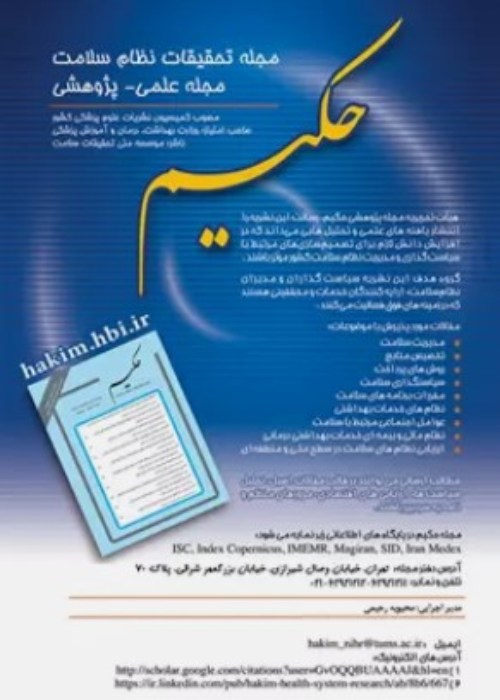The pilot study of a nationwide neonatal hearing screening in Iran: Akbarabadi and Mirzakouchak- Khan hospitals in Tehran (June 2003-October 2004)
Author(s):
Farhadi M. , Mahmoudian S. , Mohammad K. , Daneshi A. , .
Abstract:
Introduction
This study investigates the conditions under which neonatal hearing screening is useful in Iran. The objectives of the study were to identify prevalence of significant bilateral SNHL and then to demonstrate whether newborn mass screening is feasible and cost effective and would result in early detection and treatment of significant hearing impairment. Methods
Babies born at Akbarabadi and Mirzakouch-Khan university maternity hospitals from June 2003 to October 2004 were screened at birth in three stages by using transient evoked otoacoustic emissions (TEOAEs) and ABR. All newborns were tested under standard conditions before discharge from the hospital. According to the screening results, full audiological evaluations were performed when necessary. The screening method used was the TEOAEs-acoustic method. There were three stages in this study: initial screening, re-screening and diagnostic tests with ABR/OAEs. High risk neonates, especially those hospitalized in NICU, were scheduled for follow-up even if they were normal in the initial screening. Results
The result from 8490 live newborns indicated that 89.7% of newborns proved normal in the primary screening in the maternity ward, and 10.3% were abnormal. Out of 873 infants scheduled for follow-up study only 571 neonates returned. Using follow- up letters and phone calls, we managed to improve the response rate to 56% of bilateral failures. Using Poison's distribution for frequency rate of hearing impairment and normal estimate for this distribution and 95% confidence intervals, significant bilateral sensorineural hearing loss was present in ~1 to 4 per 1000 live births in the well baby nursery population (12 neonates), and in ~2.5 to 4.6 per 100 infants in the intensive care unit. The outcome of this program has stimulated the development of a nationwide (universal) newborn screening program which will be started in near future. Conclusion
Mass newborn screening for hearing impairment in our population was found to be feasible, beneficial, cost beneficial and justified.Language:
Persian
Published:
Hakim Health Systems research journal, Volume:9 Issue: 3, 2007
Page:
65
magiran.com/p465092
دانلود و مطالعه متن این مقاله با یکی از روشهای زیر امکان پذیر است:
اشتراک شخصی
با عضویت و پرداخت آنلاین حق اشتراک یکساله به مبلغ 1,390,000ريال میتوانید 70 عنوان مطلب دانلود کنید!
اشتراک سازمانی
به کتابخانه دانشگاه یا محل کار خود پیشنهاد کنید تا اشتراک سازمانی این پایگاه را برای دسترسی نامحدود همه کاربران به متن مطالب تهیه نمایند!
توجه!
- حق عضویت دریافتی صرف حمایت از نشریات عضو و نگهداری، تکمیل و توسعه مگیران میشود.
- پرداخت حق اشتراک و دانلود مقالات اجازه بازنشر آن در سایر رسانههای چاپی و دیجیتال را به کاربر نمیدهد.
In order to view content subscription is required
Personal subscription
Subscribe magiran.com for 70 € euros via PayPal and download 70 articles during a year.
Organization subscription
Please contact us to subscribe your university or library for unlimited access!


